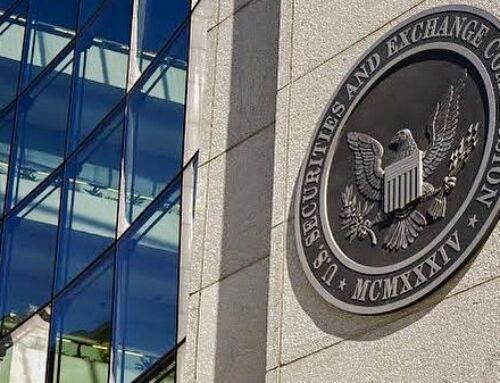View by Topic
Recent Articles
-
Congress Blocks California’s Gasoline Car BanSaturday, May 31st, 2025
-
EPA Will Keep Current Limits for “Forever Chemicals” in Drinking WaterSaturday, May 24th, 2025
-
Court Indefinitely Pauses SEC Climate Rule LitigationSaturday, May 17th, 2025
-
Maryland is About to Regulate Mold But is the Cart Before the HorseSaturday, May 10th, 2025
View by Month/Year
“Green Building Law Update” Headlines
Recent Articles & News from
Stuart Kaplow’s blog
at GreenBuildingLawUpdate.com
- EPA Will Keep Current Limits for “Forever Chemicals” in Drinking Water May 25, 2025
- Court Indefinitely Pauses SEC Climate Rule Litigation May 18, 2025
- Maryland is About to Regulate Mold: But is the Cart Before the Horse? May 11, 2025
- BEPS Redux: The Most Far Reaching Environmental Legislation of the 2025 Maryland General Assembly May 4, 2025
Subscribe to the Green Building Law Update!
Stuart Kaplow brings his expertise and extensive experience to the table with his unique digital publication, "Green Building Law Update". Subscribers receive regular updates to keep them informed about important issues surrounding Environmental Law, Green Building & Real Estate Law, as well as the emerging demand for Environmental Social Governance (ESG).
Get fresh content through the lense of Stuart Kaplow's cutting-edge expertise, innovative commentary and insider perspective. Don't miss another issue! Subscribe below.

Unmasking “Green Bleaching”: A New Chapter in Sustainability Strategies
In the ever evolving landscape of corporate sustainability, where the battle for environmental credibility rages on, a new metaphor has emerged .. “green bleaching.” Originating from the shores of the United Kingdom, this metaphorical concept is making waves in the world of eco-conscious statements.
While many are familiar with the concept of greenwashing, a deceptive tactic aimed at overstating environmental commitments, green bleaching takes a different approach. It’s not about exaggerating environmental claims but rather intentionally keeping confidential and secret sustainability efforts, including scrubbing any references in existing public facing writings.
Understanding the Basics:
To comprehend the significance of the emergent and fast growing green bleaching, let’s first revisit its counterparts .. greenwashing and green hushing. Greenwashing, akin to whitewashing, involves making false or misleading representations about a product or service’s environmental benefits. On the other hand, green hushing pertains to deliberately limiting the public disclosure of a company’s green and social initiatives, driven by concerns about potential backlash, negative public perception, or even legal consequences.
In a real world example of green bleaching, we were recently asked to assist a business in bleaching all references to ESG and other environmental matters from their website and their annual report.
In another example, we have assisted when the SEC staff has in recent months sent inquiries to companies asking for an explanation why their 10-K annual reports contain less information about climate risk than their separate sustainability reports or content on their websites.
The Birth of Green Bleaching:
As sustainability practices face increasing scrutiny, nearly every organization is navigating a delicate balance between genuine environmental responsibility and protecting their reputations. Enter green bleaching, a strategy that involves affirmatively playing down the sustainability credentials of products and services. The primary motivation behind green bleaching is to avoid attracting undue attention or extra scrutiny for green claims, even if those claims are mandated by government and perceived to be accurate (e.g., submitting greenhouse gas data to a government as required by a BEPS program).
The UK Connection:
The term green bleaching first caught the attention of regulatory authorities in the United Kingdom, with the Financial Conduct Authority leading the charge. Investment companies were observed intentionally toning down their sustainability messaging in what had in the past been marketed as “green” mutual funds, marking a departure from the typical greenwashing tactics that had allegedly been prevalent. As the phenomenon gained recognition in the UK, it didn’t take long for the trend to cross the Atlantic and become a topic of discussion in the United States from C suites to ma and pa businesses.
Motivations Behind Green Bleaching:
A variety of motivations drive companies to engage in green bleaching. One of the primary reasons is the desire to avoid the unintended pitfalls associated with greenwashing, including reputational damage and potential legal consequences. By affirmatively keeping their environmental efforts confidential and secret, businesses aim to fly under the radar and avoid the heightened scrutiny that often accompanies sustainability claims (e.g., including greenhouse gas reduction successes as described in our post, California Passes Groundbreaking Climate Disclosure Bills).
The Dilemma of Authenticity:
While the intentions behind green bleaching may vary, this strategy raises questions about the authenticity of corporate sustainability efforts. Striking a balance between promoting legitimate eco-friendly practices and protecting a brand from potential backlash, legitimate, illegitimate, or otherwise, not to mention government action, is undoubtedly challenging. The failure of the Federal Trade Commission to update its Green Guides is not helpful. Consumers, investors, and regulatory bodies now face the task of discerning genuine environmental commitment from strategic understatements.
Of great import to this discussion is that increasing numbers of businesses are continuing and expanding broader and bigger sustainable efforts; they are just now keeping it confidential.
Conclusion:
As the world grapples with the urgent need for sustainable practices, the emergence of green bleaching adds a new layer of complexity to the conversation. It prompts us to question not only the transparency of corporate sustainability but also the delicate dance companies perform to maintain a positive public image. Some have suggested a less activist role for government in greenwashing (after all these are consumer protection claims), and allowing the marketplace to police the space?
The challenge for businesses moving forward may be to find a middle ground where genuine environmental responsibility is championed without succumbing to the pitfalls of greenwashing or the subtleties of green bleaching. As regulators, consumers and other stakeholders become increasingly discerning, the future of corporate sustainability may well hinge on the delicate balance between authenticity and reputation management, but today green bleaching is the risk mitigation strategy de rigueur.









